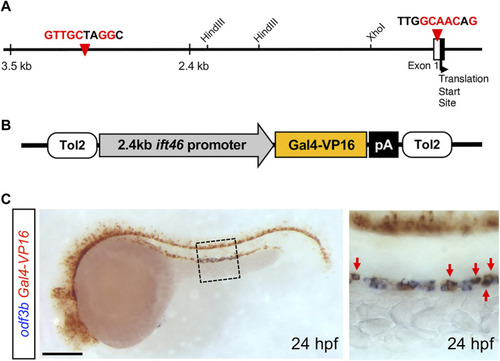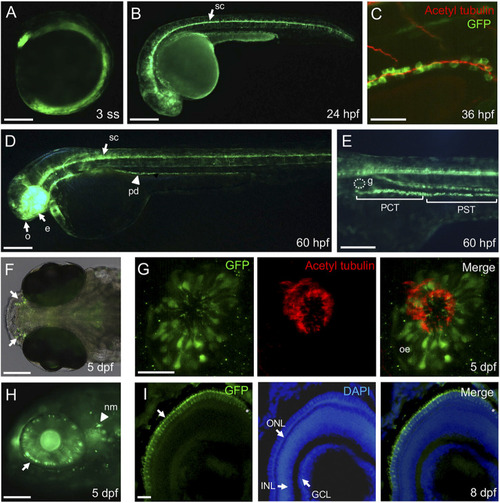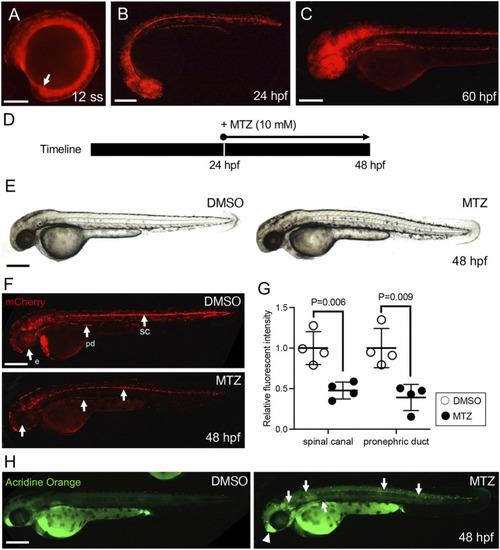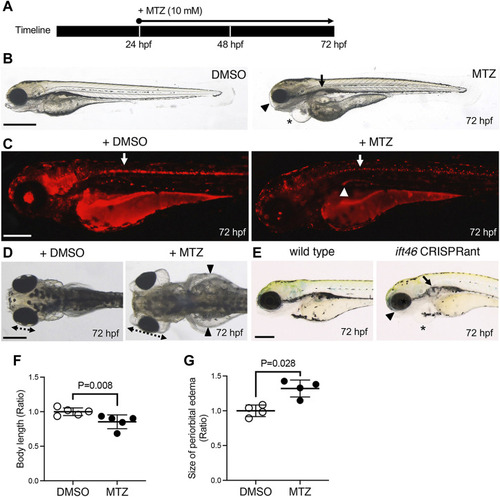- Title
-
IFT46 gene promoter-driven ciliopathy disease model in zebrafish
- Authors
- Lee, M.S., Han, H.J., Choi, T.I., Lee, K.H., Baasankhuu, A., Kim, H.T., Kim, C.H.
- Source
- Full text @ Front Cell Dev Biol
|
Transient expression of |
|
Ciliated cell-specific expression in the stable transgenic |
|
Establishment of the ciliated cell-specific ablation zebrafish model. |
|
Ciliopathy zebrafish model by ciliated cell ablation in |




